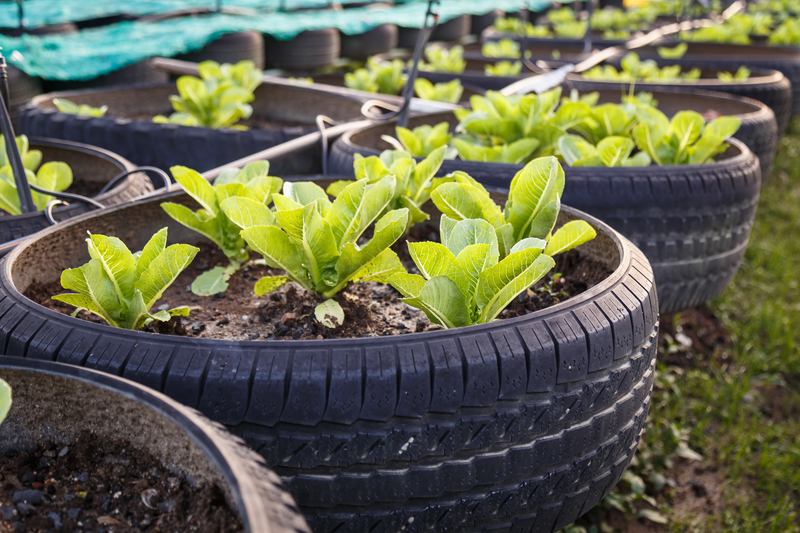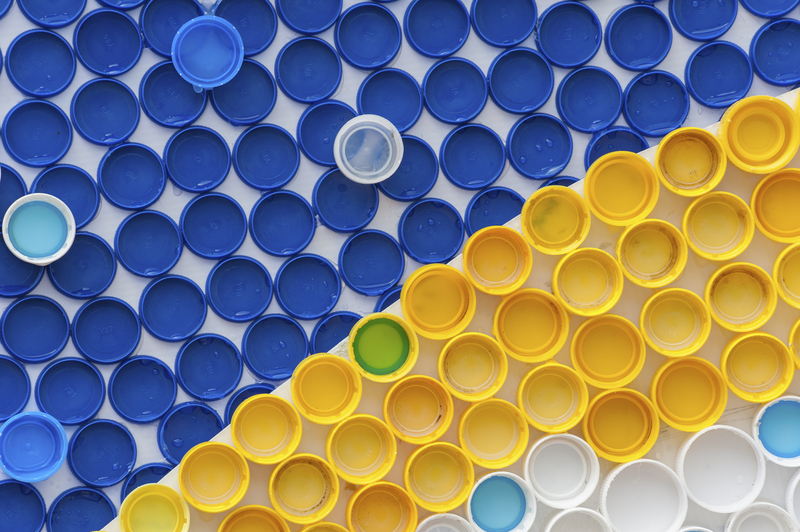Essential Tips for a Plastic-Light Living
Living a plastic-light lifestyle is more than just a trend; it's a conscious choice towards sustainability and healthier living. As awareness grows about the adverse effects of plastic pollution on our planet, many individuals and families seek actionable ways to reduce plastic waste. In this comprehensive guide, you'll discover essential tips for embracing a plastic-light lifestyle, practical plastic reduction techniques, and how small changes can make a significant difference for the environment and your health.

Why Opt for a Plastic-Light Lifestyle?
Plastic pollution is a pressing global issue, with millions of tons of plastic waste ending up in oceans and landfills each year. These plastics often take hundreds of years to decompose, leaching toxic substances and endangering wildlife. By transitioning to plastic-light living, you help reduce your environmental footprint, conserve natural resources, and foster a healthier environment for generations to come.
Key Benefits of Reducing Plastic Use
- Protecting marine life by decreasing plastic pollution in oceans and waterways
- Reducing exposure to harmful chemicals found in plastics, such as BPA and phthalates
- Minimizing landfill waste and supporting a circular economy
- Encouraging responsible consumer habits and mindful purchasing
Practical Tips for a Plastic-Light Lifestyle
1. Choose Reusable Alternatives
One of the most effective strategies for minimizing plastic usage is to replace single-use plastics with reusable products. Pay attention to everyday items that often have disposable plastic counterparts and swap them for sustainable options.
- Water Bottles: Carry a stainless steel or glass water bottle instead of buying single-use plastic bottles. Many cafes and public places offer refilling stations.
- Tote Bags: Use sturdy, fabric tote bags for your grocery shopping rather than plastic bags. Keep a few in your car or backpack for convenience.
- Food Storage: Opt for glass containers, beeswax wraps, and silicone food bags to store leftovers and pack lunches instead of using cling film or plastic bags.
- Coffee Cups: Bring your own reusable coffee cup to cafes. Many businesses offer discounts for using your own cup.
2. Shop Smart to Cut Down on Plastic
Making conscious purchasing decisions goes a long way in reducing your plastic footprint. Aim to buy products with minimal packaging and choose materials that are more easily recycled or composted.
- Bulk Shopping: Seek out bulk food stores that allow you to bring your own containers.
- Fresh Produce: Choose loose fruits and vegetables over pre-packaged options. Use mesh produce bags if available.
- Bar Soap & Shampoo: Switch to bar soaps and shampoos instead of liquid products in plastic bottles.
- Eco-friendly Brands: Support brands committed to sustainable packaging and ethical practices.
3. Rethink Your Kitchen Habits
Kitchens can be hotspots for single-use plastics. Revamp your kitchen routines to minimize dependence on disposable plastics.
- Use Cloth Napkins: Replace paper napkins and towels with washable cloth alternatives.
- Reusable Dishware: Say no to plastic plates, cups, and cutlery. Opt for ceramic, glass, or bamboo ware.
- Compost Food Scraps: Composting not only reduces waste but also cuts down on the number of trash bags used.
- Avoid Plastic Wrap: Cover leftovers with beeswax wraps or reuse containers with lids.
4. Personal Care and Hygiene Go Plastic-Light
Your personal care routine is another domain where plastics often sneak in. Many modern cosmetic and hygiene products come wrapped in layers of plastic. With some thoughtful swaps, you can look and feel good, while also caring for the planet.
- Bamboo Toothbrushes: Switch to bamboo or other biodegradable toothbrushes instead of plastic ones.
- Reusable Razors: Invest in a metal safety razor with replaceable blades.
- DIY Skincare: Experiment with homemade lotions, deodorants, and scrubs using natural ingredients.
- Refill Stations: Look for local stores that offer refills for shampoos, conditioners, and soaps.
5. Dine Out & Order In Responsibly
With takeout and delivery becoming more popular, so does the prevalence of single-use plastics. Be proactive and request minimal or no plastic with your food orders.
- Decline Single-Use Utensils: Specify that you do not need plastic cutlery, straws, or sachets when ordering food.
- Carry Reusables: Bring your own container for leftovers when eating out or pack a set of reusable cutlery.
- Support Green Restaurants: Choose eateries that use compostable or recyclable materials.
6. Eco-Conscious Cleaning
Many household cleaners are packaged in plastic bottles and contain microplastics. Make your cleaning routine greener with these tips:
- Dilute Concentrates: Purchase cleaning concentrates that can be mixed in reusable bottles to reduce single-use plastic waste.
- Homemade Solutions: Use DIY recipes for cleaners using ingredients like vinegar, baking soda, and lemon juice.
- Natural Tools: Choose wooden, loofah, or metal cleaning tools instead of plastic sponges and brushes.
How to Start Your Plastic-Light Journey
Evaluate Your Plastic Consumption
Begin with a plastic audit. Spend a week tracking the plastics you use and throw away daily. You'll soon spot patterns, like reliance on certain packaging or unavoidable takeout containers. Use this information to prioritize where to make changes and set achievable goals.
Involve Your Whole Family
Switching to a plastic-light lifestyle is easier and more effective when everyone participates. Educate children about the value of reducing single-use plastics, make eco-friendly choices a family activity, and celebrate achievements together.
- Assign eco-friendly chores such as carrying tote bags or helping sort recyclables
- Try plastic-free challenges for a week or a month to motivate each other
- Create a reward system for meeting family goals, such as planting a tree or going on a nature walk
Keep Learning and Adapting
The journey to a plastic-light life is ongoing. Stay informed about new products, trends, and ideas for reducing plastic use in your community. Share your successes and challenges with others to inspire change and connect with like-minded individuals.
Alternative Materials to Plastic
Understanding what materials can effectively replace plastic is key to making sustainable choices. Here are some popular and eco-friendly alternatives:
- Glass: Perfect for storage, food containers, and drinking vessels. It's infinitely recyclable and doesn't leach chemicals.
- Stainless Steel: Durable, rust-free, and ideal for bottles, lunch boxes, and even straws.
- Bamboo: Rapidly renewable and biodegradable, bamboo is excellent for toothbrushes, cutlery, and dishware.
- Silicone: Long-lasting and flexible, suitable for bakeware and food storage bags.
- Compostable Plastics: Made from plant materials, these break down faster under the right conditions but still require industrial composting facilities.
Common Myths About Plastic Reduction
"Plastic-Free Living is Too Expensive"
While some eco-friendly products have a higher initial cost, they are typically more durable and reusable, leading to savings over time. Buying less, choosing quality, and avoiding impulse buys can actually result in a lower overall expenditure.
"My Individual Effort Doesn't Matter"
Every purchase and habit has a ripple effect. When you reduce your plastic use, you're not just making a personal impact; you're setting an example for others and encouraging companies to shift towards sustainable practices. Collective small steps lead to significant positive change.

Frequently Asked Questions About Plastic-Light Living
How can I avoid microplastics in my daily life?
Microplastics are found in many beauty products, synthetic clothing, and even cleaning agents. Read labels carefully, wash synthetic clothes less frequently or use a microfiber-catching device, and select natural-based products when possible.
Is recycling enough to manage plastic waste?
Recycling is important but not a standalone solution. Many plastics can't be recycled due to contamination or composite materials. The best practice is to reduce and reuse first, then recycle what remains.
What are the easiest swaps for beginners?
Start by eliminating plastic water bottles, straws, and grocery bags. These are often the most common and simplest items to replace with sustainable alternatives, kick-starting your journey toward a plastic-light lifestyle.
Conclusion: Build a Plastic-Light Future
Embracing a plastic-light lifestyle is a rewarding and impactful choice. By integrating the essential tips outlined above, you can significantly reduce your dependency on plastics and contribute positively to the planet's health. Every step counts--from carrying your own tote to encouraging friends and family to join you in living sustainably.
Remember: Living plastic-light is not about perfection but progress. Consistent, mindful choices will create habits for lifelong sustainability and inspire others to reconsider their relationship with plastics. Start your journey today and be the change our planet needs!
```